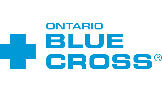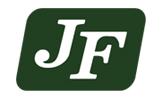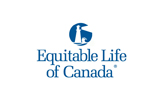Life Insurance Markets
Quote Details
Market Insight
Next Step
Quotes
Things to Consider
Take everything you owe ($) minus your investments ($), plus $20,000 of funeral expenses, that would be the minimum.
Add a minimum of $15,000 per child for every year between their age and 25 years old, and you have now taken care of your children.
Then, add any inheritance you want to leave and/or anywhere from $7,000 to $20,000 (per child) for every year of post-secondary education you want to assure for your children.
Need is subjective. This is just the bare minimum
If you have mortgage or kids, take the longer of your mortgage amortization (the length of time remaining) and the different in year between your youngest child age and 25 years.
As an example, if you have 12 years left on your mortgage and your youngest child is 7, in this case, you would need at least 18 years coverage.
Need is subjective. This is just the bare minimum
If you brought cigarettes in the last year, you are a smoker.
If you have smoked any form of tobacco on more than 3 separate occasions in the last year, you are a smoker.
If you vape nicotine, you are a smoker.
If you chew tobacco, you are a smoker.
If you would test positive for cotinine in the blood (from nicotine), you are a smoker.
If you were a smoker, then quit and have not consumed tobacco for an entire year, you are not a smoker.
This does not apply to cannabis.
Health Classes
Regular
- Generally Healthy
- Average Build
- Only Few Ongoing Prescriptions if Any
- Minor or No History of Chronic Disease
Simplified
- Generally Healthy
- Over or Under Weight
- May Have History of Chronic Disease
- No Recent Hospitalization
Guaranteed
- May Have Health Complications
- Any Build
- May Have Had a Recent Health Scare
- May Have Recent Hospitalization
Types of Life Insurance
There are two categories of life insurance, temporary and permanent. Temporary life insurance is intended to be used exclusively to protect vulnerable loved one’s financially while permanent life insurance is designed to also generate wealth.
Applying for life insurance, there are four categories of issuance; fully underwritten, simplified, deferred and guaranteed. The more stringent the issuance standard, the more questions are asked on the application which often results in better prices and more flexible coverage. Find out more about issuance standards.
Temporary Life Insurance
Coverage and rates on 10-year term life insurance are guaranteed for 10 years. Policies may be renewable or exchangeable at new rates or converted to other types of life insurance. After 10 years, if not renewed, coverage will expire.
Coverage and rates on 20-year term life insurance are guaranteed for 20 years. Policies may be renewable or exchangeable at new rates or converted to other types of life insurance. After 20 years, if not renewed, coverage will expire.
Coverage and rates on 30-year term life insurance are guaranteed for 30 years. Policies may be renewable or exchangeable at new rates or converted to other types of life insurance. After 30 years, if not renewed, coverage will expire.
Coverage and rates on term to 65 life insurance are guaranteed for until there year at which the insured turns 65. Policies may be converted to other types of life insurance. After the year at which the insured turns 65, coverage will expire if not converted to permanent life insurance.
Commonly referred to as permanent life insurance, Term to 100 is temporary life insurance because people do live past the age of 100. There is alo no cash value attributed to this type of policy.
Coverage and rates on term to 100 life insurance are guaranteed until the year at which the insured turns 100. After the year at which the insured turns 100, coverage will expire if not converted to permanent life insurance.
Permanent Life Insurance
Whole life insurance provides you coverage for the entirety of your life regardless to how old you live. Policies may contain a Cash Surrender Value (CSV) and/or produce Dividends.
A cash surrender value is a side account that may grow and can be withdrawn, used as collateral, pay for policy premiums, or increase the death benefit. Some whole life insurance policies are participating and thus produce dividends.
Life pay means that premiums are paid until age 100
Whole life insurance provides you coverage for the entirety of your life regardless to how old you live. Policies may contain a Cash Surrender Value (CSV) and/or produce Dividends.
A cash surrender value is a side account that may grow and can be withdrawn, used as collateral, pay for policy premiums, or increase the death benefit. Some whole life insurance policies are participating and thus produce dividends.
10 pay means that premiums are paid for 10 year after which dividends pay for the policy.
Whole life insurance provides you coverage for the entirety of your life regardless to how old you live. Policies may contain a Cash Surrender Value (CSV) and/or produce Dividends.
A cash surrender value is a side account that may grow and can be withdrawn, used as collateral, pay for policy premiums, or increase the death benefit. Some whole life insurance policies are participating and thus produce dividends.
20 pay means that premiums are paid for 20 year after which the cash surrender value pays for the policy.
While traditional whole life insurance produces wealth through a guaranteed Cash Surrender Value (CSV), participating whole life also produce non-guaranteed dividends to accumulate within and further build that cash surrender value (CSV).
Dividends are generated by the returns of the Par Fund which is managed conservatively by the insurance company within their own book of insurance, fixed income securities, real estate, infrastructure, private and public equities. The direction participating whole life insurance performance has historically been correlated to interest rates.
Many tax advantages may apply to using this life insurance, particularly in a corporate setting.
Like whole life insurance, Universal Life Insurance provides you coverage for the entirety of your life regardless to how long you live. Policies typically contain a Cash Surrender Value (CSV) which is an investment component embedded within the premium.
With universal life insurance, the cash surrender value (CSV) is managed by policy holder through a variety of investment vehicles available and not by the insurance company. This allows the policy holder more discretion on how their CSV is invested making this coverage the versatile yet the more sophisticated.
Many tax advantages may apply to using this life insurance particularly in a corporate setting.
Our Insurance Providers

























